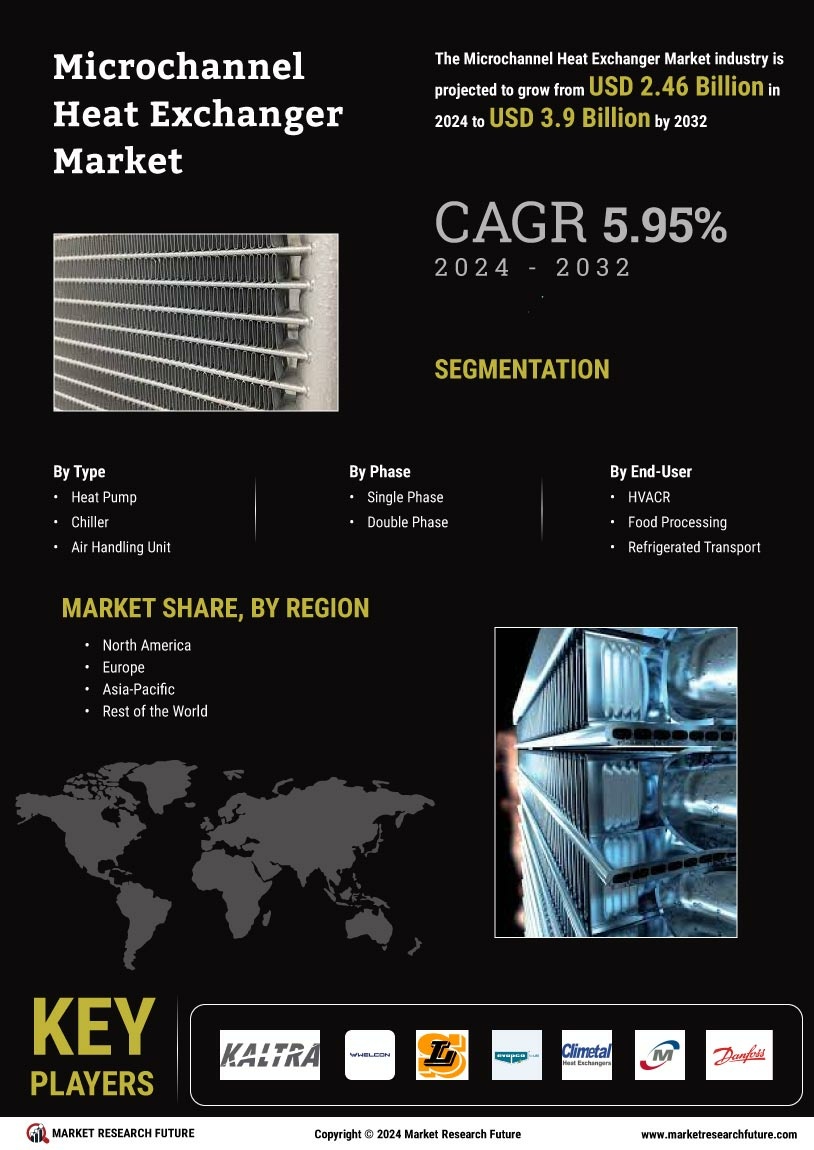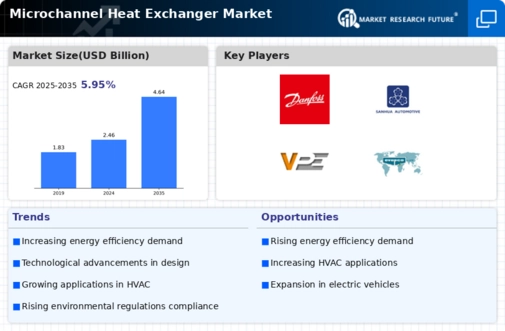Leading market players are investing heavily in research and development in order to expand their product lines, which will help the Microchannel Heat Exchanger Market, grow even more. Market participants are also undertaking a variety of strategic activities to expand their footprint, with important market developments including new product launches, contractual agreements, mergers and acquisitions, higher investments, and collaboration with other organizations. To expand and survive in a more competitive and rising market climate, Microchannel Heat Exchangerindustry must offer cost-effective items.
Manufacturing locally to minimize operational costs is one of the key business tactics used by manufacturers in the Microchannel Heat Exchanger industry to benefit clients and increase the market sector. In recent years, the Microchannel Heat Exchanger industry has offered some of the most significant advantages to medicine. Major players in the Microchannel Heat Exchanger Market, including Climatel SL (Spain), Danfoss (Denmark), Zhejiang DUNAN Artificial Environment co., LTD (China), Sanhua (US), Vacuum Process Engineering (US) and others, are attempting to increase market demand by investing in research and development operations.
Carrier Corporation is a worldwide American corporation based in Palm Beach Gardens, Florida that manufactures heating, ventilation, and air conditioning (HVAC), refrigeration, and fire and security systems. Carrier began as an independent firm manufacturing and marketing HVAC systems in 1915, and has since expanded to encompass commercial refrigeration and food service equipment, as well as fire and security technologies. In 2021, Sanhua has joined the Carrier Alliance programme and entered a long-term strategic collaboration with Carrier, according to Carrier Corporation.
Sanhua will offer designed components, such as heat exchangers and drives, throughout Carrier's HVAC and Refrigeration portfolios under the terms of the deal.
Alfa Laval AB is a Swedish corporation founded in 1883 by Gustaf de Laval and Oscar Lamm. The company, which began by offering centrifugal separation solutions for dairy (see Separator (milk)), today produces specialised equipment and solutions for heavy industry. The goods are used to heat, cool, segregate, and convey oil, water, chemicals, drinks, foodstuffs, starch, and medications. In March 2022, Alfa Laval, a pioneer in critical heat transfer, separation, and fluid handling technologies, has introduced a gasket plate heat exchanger that is likely to have an impact on a variety of applications.
The TS45 is the most advanced exchanger on the market, providing both performance and versatility.
















Leave a Comment